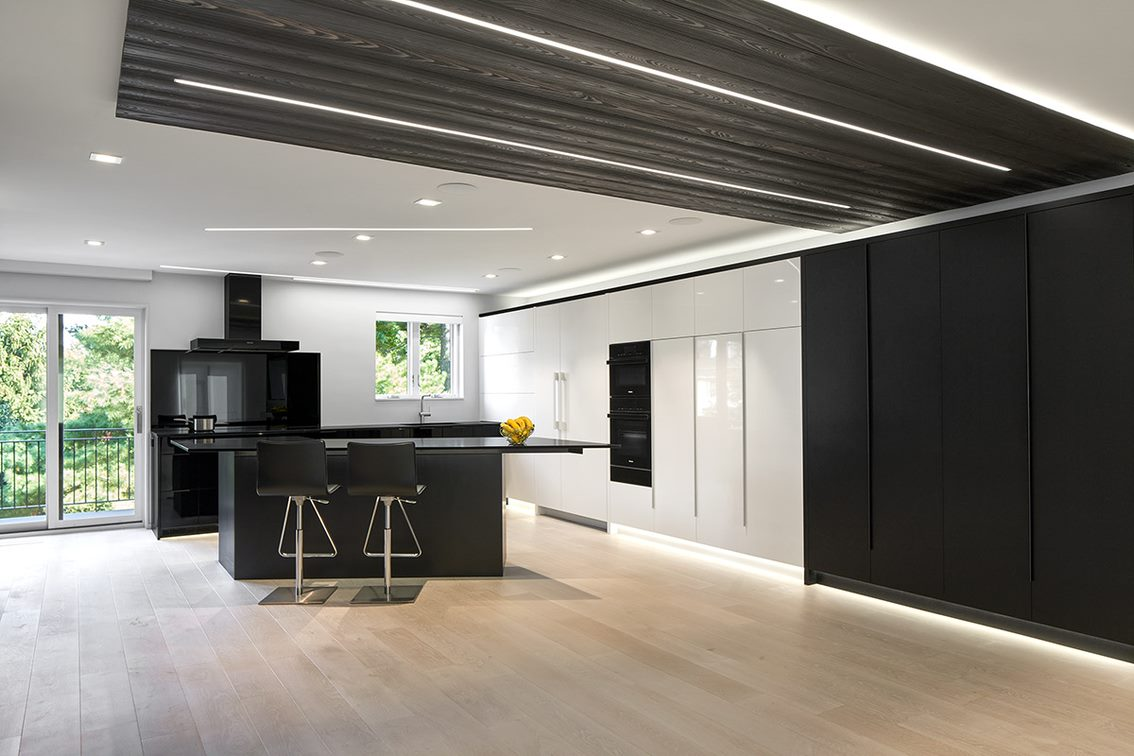Linear lighting, with its sleek and contemporary aesthetic, has become a staple in modern architectural design. But when it comes to seamlessly integrating light into your projects, recessed linear lighting offers a unique set of advantages. Let’s delve into how this strategic lighting solution can elevate your architectural spaces.
Recessed Linear Lighting
Recessed linear lighting goes beyond simple illumination. Here’s how it enhances your architectural designs:
- Streamlined Aesthetics: Recessed fixtures disappear into the ceiling, avoiding visual clutter and creating a clean, minimalist look. This is perfect for emphasizing clean lines and contemporary design principles.
- Flexibility in Design: Linear fixtures come in various lengths, widths, and configurations. This allows you to create customized lighting layouts that complement the architectural elements of your space. Long, unbroken lines of light can emphasize a room’s length, while strategically placed fixtures can highlight specific design features.
- Zoning and Layering: Recessed linear lights can be used to create different lighting zones within a space. This allows for functional task lighting in specific areas while maintaining a warm ambient glow in others. Layering light sources adds depth and dimension to your design.
- Highlighting Architectural Features: Recessed linear lighting can be used to strategically cast light on specific architectural elements. From coves and tray ceilings to wall textures and artwork, these fixtures can be used to create dramatic focal points and draw the eye to key design features.
Utilizing Recessed Linear Lighting Effectively
Here are some key considerations for incorporating recessed linear lighting into your designs:
- Ceiling Height: While recessed lighting works well in most cases, it’s ideal for spaces with higher ceilings. This ensures the light source remains hidden and avoids creating a visually oppressive feel.
- Light Distribution: Think about the desired light distribution in each space. For general illumination, consider using wider fixtures with diffused lenses. Task lighting areas might benefit from narrower fixtures with a more focused beam.
- Color Temperature: The color temperature of the light bulbs plays a crucial role in setting the mood and ambiance. Opt for warm white light for a cozy feel in living areas, and cooler temperatures for task lighting in kitchens or workspaces.
- Integration with Controls: Consider incorporating dimmer switches or smart lighting systems to allow for dynamic control over the lighting. This empowers users to adjust the light based on activity or desired atmosphere.
Conclusion: A Partnership Between Light and Design
Recessed linear lighting is more than just a lighting solution; it’s a design tool. By understanding its properties and using them strategically, you can create architectural spaces that are both functional and visually stunning. So let light be your partner, guiding your designs and creating a symphony of form and illumination.
This post was written by a professional at GlowbackLED. GlowbackLED has been the industry leading custom LED lighting manufacturer located in Miami, FL for years. They specialize in custom LED light panels for backlighting translucent stones, artwork, stained glass, and resin. They have been manufacturing robust lines of recessed linear lighting, surface linear, and pendant linear LED light fixtures (suspended or hanging). Proudly offering industry leading project management and support, Glowback is second to none! Their goal is to make your purchasing experience as simple and headache free as possible.

